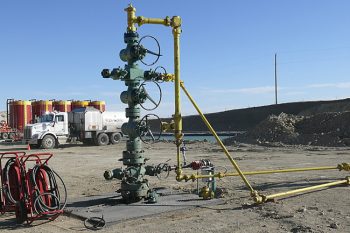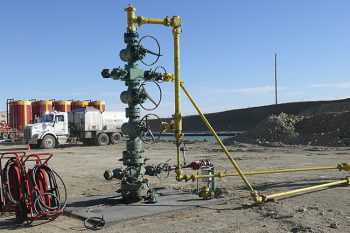Unfortunately, the vast majority of these simulators are out of reach due to the fact that they are extremely expensive and can only be purchased by petroleum companies. This is because of the fact that petroleum companies are the only ones that can afford them. These companies are the only ones who can afford the sophisticated and cutting-edge simulators, and they are the only ones who can get their hands on them. Because they are becoming less expensive and easier to acquire, more people will be able to use simulators.

The Open Porous Media (OPM) flow simulator is a piece of open-source software that can be used to simulate, upscale, and visualize processes that take place in porous subsurface reservoirs.
Its name comes from the acronym for "Open Porous Media," which stands for "open porous media flow simulator."All of these capabilities are made possible by its name, which literally translates to "open porous media."It gets its name from the fact that it is an open porous medium, which gives it the ability to do all of these things and is the source of its capability. This model, which was referred to as a black-oil model, was supposed to be capable of executing standard simulation models when it was finally finished. Because managing licenses is not a prerequisite for using any of the countless features that it offers, you do not need to do so in order to take advantage of any of those features.
In addition to that, this simulator is endowed with the capability of controlling history matching wells, bottomhole pressure, surface rate, reservoir rate, well lists, action conditions, and command processing. In addition to that, it can carry out a diverse set of directives that have been given to it.
The Matlab Reservoir Simulation Toolbox is a piece of open-source software that can be employed for the modeling and simulation of subsurface reservoirs.
It is also known by its acronym, MRST, which is a shortened version of the full name. The program can be downloaded for free at any time, and its abbreviated name is commonly used to refer to it. The computational geosciences group at SINTEF Digital, which is housed within the department of mathematics and cybernetics, was the one responsible for the conception of the project when it was first conceived. In addition to that, it is made up of a huge variety of modules that were developed by experts who work for the Heriot-Watt University and were designed by those experts. It is generated to ensure a quick framework and examination of the issues that arise during the simulation of the reservoir. This is done in order to ensure accuracy. This is done to ensure that the information is correct. In order to guarantee that the information is accurate, this step is taken. It is based on the premise that the fluids in a reservoir can be separated into three distinct fluid phases: oil, gas, and water.
These phases always have the same composition, and the only time their physical properties change is in response to changes in pressure. It is assumed that the components that make up the fluids have not changed in any way.
The BOAST 3-PC is a flexible piece of equipment that can be utilized in a wide variety of settings due to its adaptability.
The following is not an exhaustive list of the problems that BOOST 3 is capable of handling in the event that they occur while BOOST 3 is being used in field production; however, these problems are included here for context:
• The process of maintaining a constant pressure within a system by periodically injecting water and/or gas into it in order to achieve this goal.
• Reviewing the waterflooding operations and providing feedback on how successful they were after conducting an investigation into them.
In addition to different zones of pressure, volume, and temperature, there are also different accommodations made for the many different types of rock.
• The ability to limit the performance of the well by either imposing rate restrictions or pressure restrictions, giving the operator a choice between the two options for how to accomplish the performance limitation.
• History matching can be achieved by using data on oil, water, or gas production, as well as the gas/oil ratio or the water/oil ratio. Another option is to use both of these ratios. In addition, either the average pressure in the reservoir or the pressure in the bottomhole well can be matched. The Distributed Unified Numerics Environment (Dune) project, which was ultimately in charge of the development of Dune, was where the idea for the game was initially conceived. The computer programming language C++ was utilized during the creation of both Dune and DuMux. Both of these programs make use of contemporary programming techniques that are unique to C++, as well as C++ template meta programming, in order to achieve a high level of efficiency and keep their interfaces generic. It is dependent on the Dune core modules and is capable of interacting with a wide variety of other Dune-based extension modules on an individual basis; however, this type of interaction is dependent on the core modules themselves. The drilling and well operations are carried out with the assistance of the most cutting-edge drilling test site in the world, as well as a specialized kind of drilling rig that is known as an Ullrigg. Both of these pieces of equipment are referred to collectively as "Ullriggs."
You do not need any specialized hardware to run this simulator because it is hosted in the cloud and utilizes modern technologies on a variety of devices (including laptops, iPhones, and iPads).
In point of fact, you do not even require the use of a computer at any point. As a consequence of this, the simulator can be utilized on virtually any kind of computer platform.
With the assistance of a piece of software known as the Well Control Simulator, the IADC is able to carry out each and every one of the simulations that are required of it. The purpose of running these simulations is to ensure that future operations will be carried out in a way that is not only successful but also risk-free. These simulations cover every aspect of the completion process, from well servicing and well control to kick detection and kill problems. They also cover the entire completion process. Second, you have the ability to create wells that are customized to your particular requirements (with parameters such as piping sizes, kick timing, etc.). This gives you a lot of flexibility in terms of how you can use the tool. You have a great deal of leeway as a result of this. As a direct consequence of this, you will have a distinct advantage over the other users.



